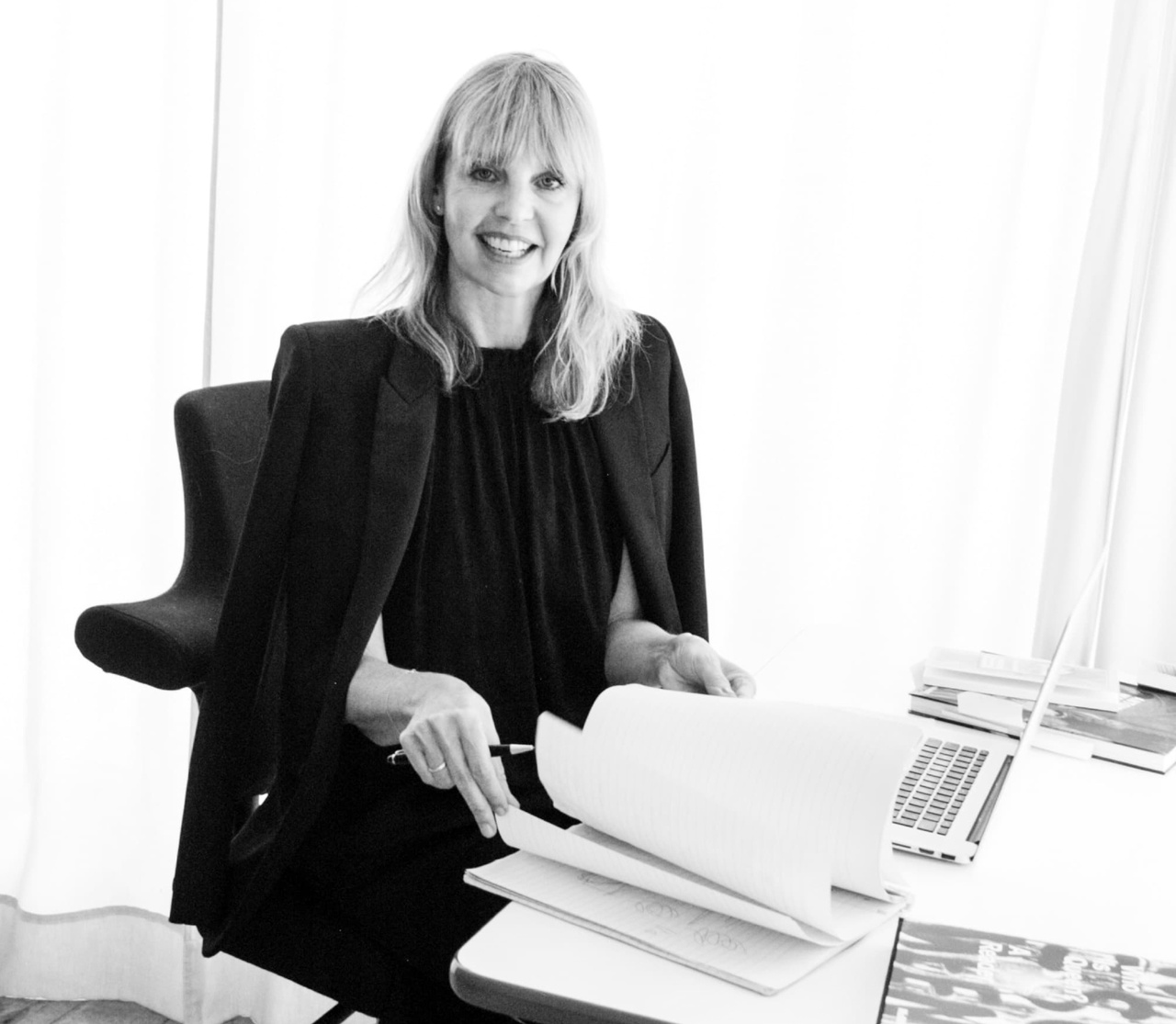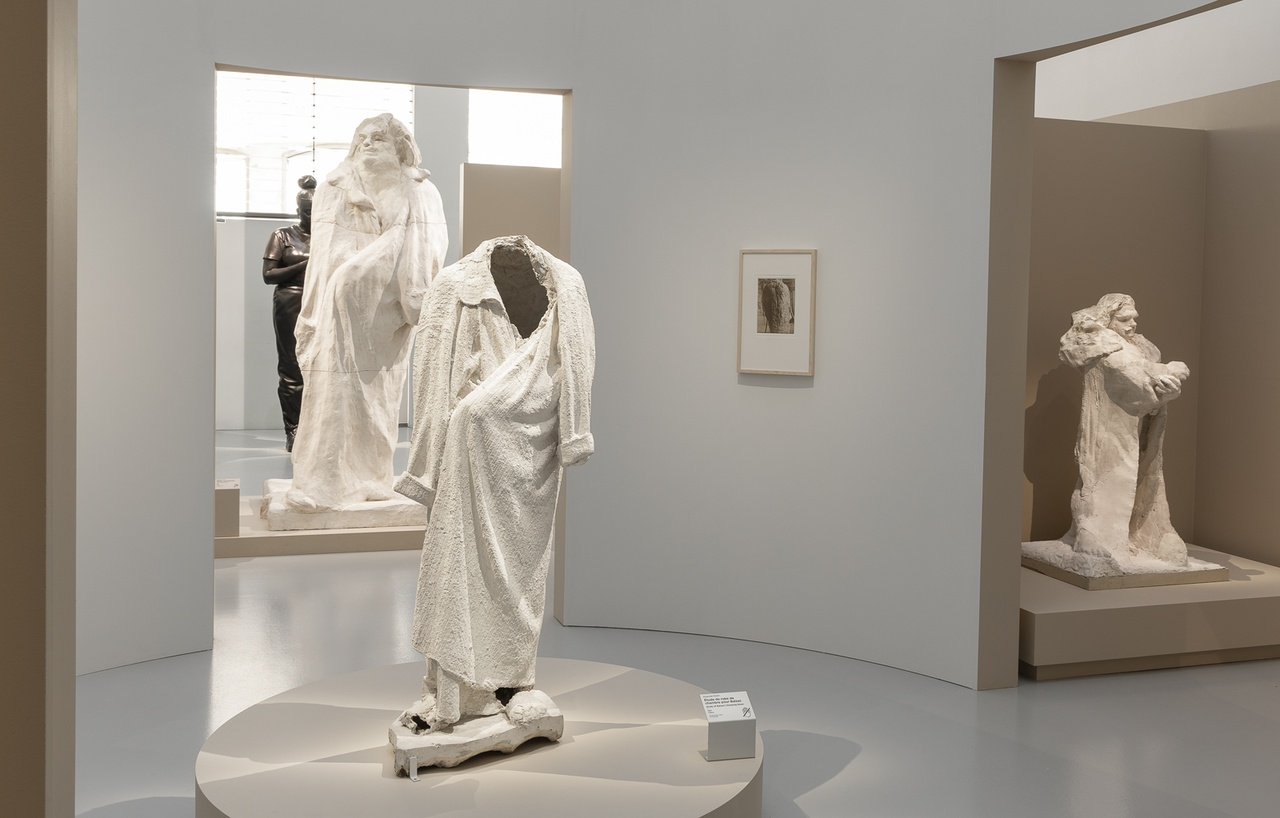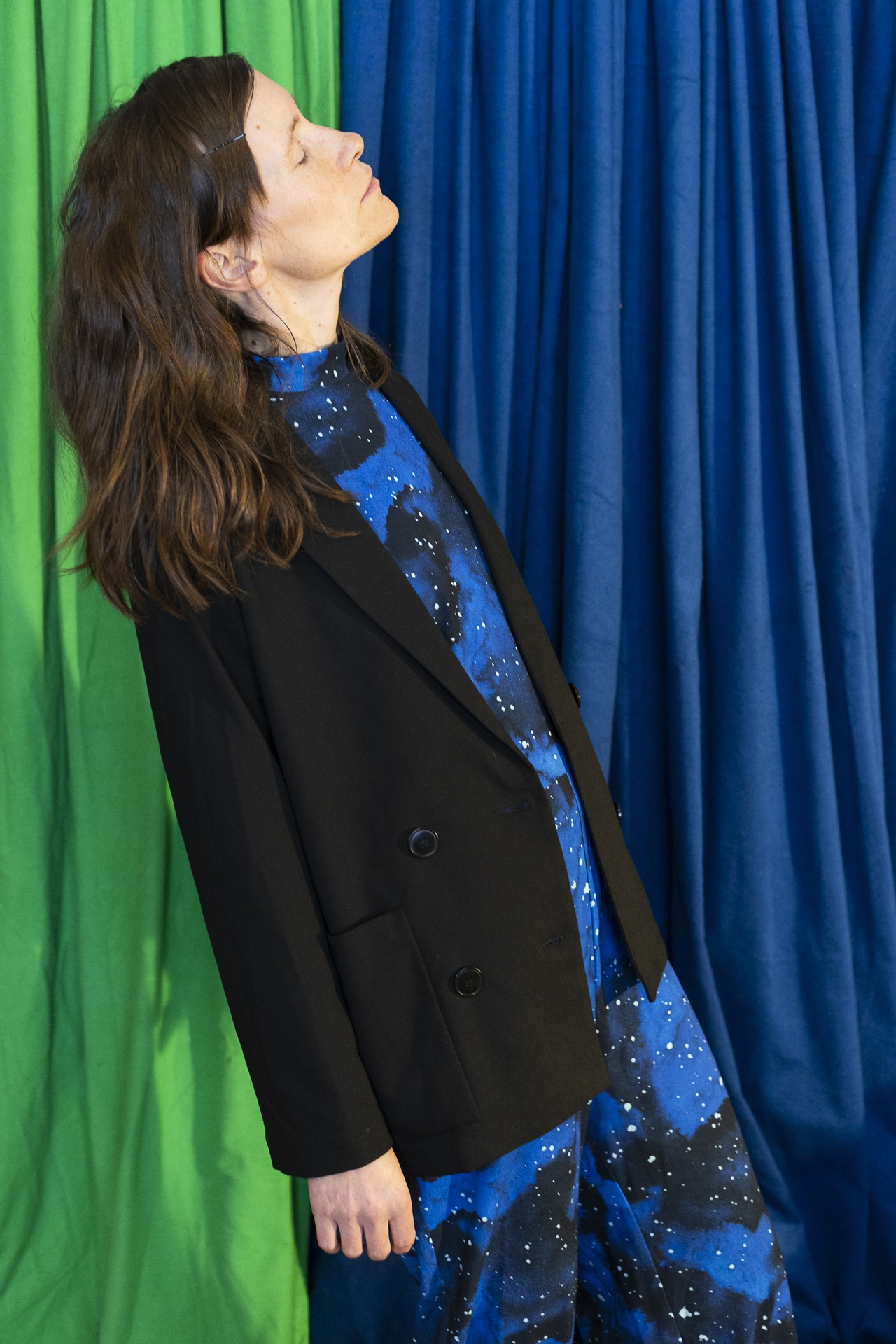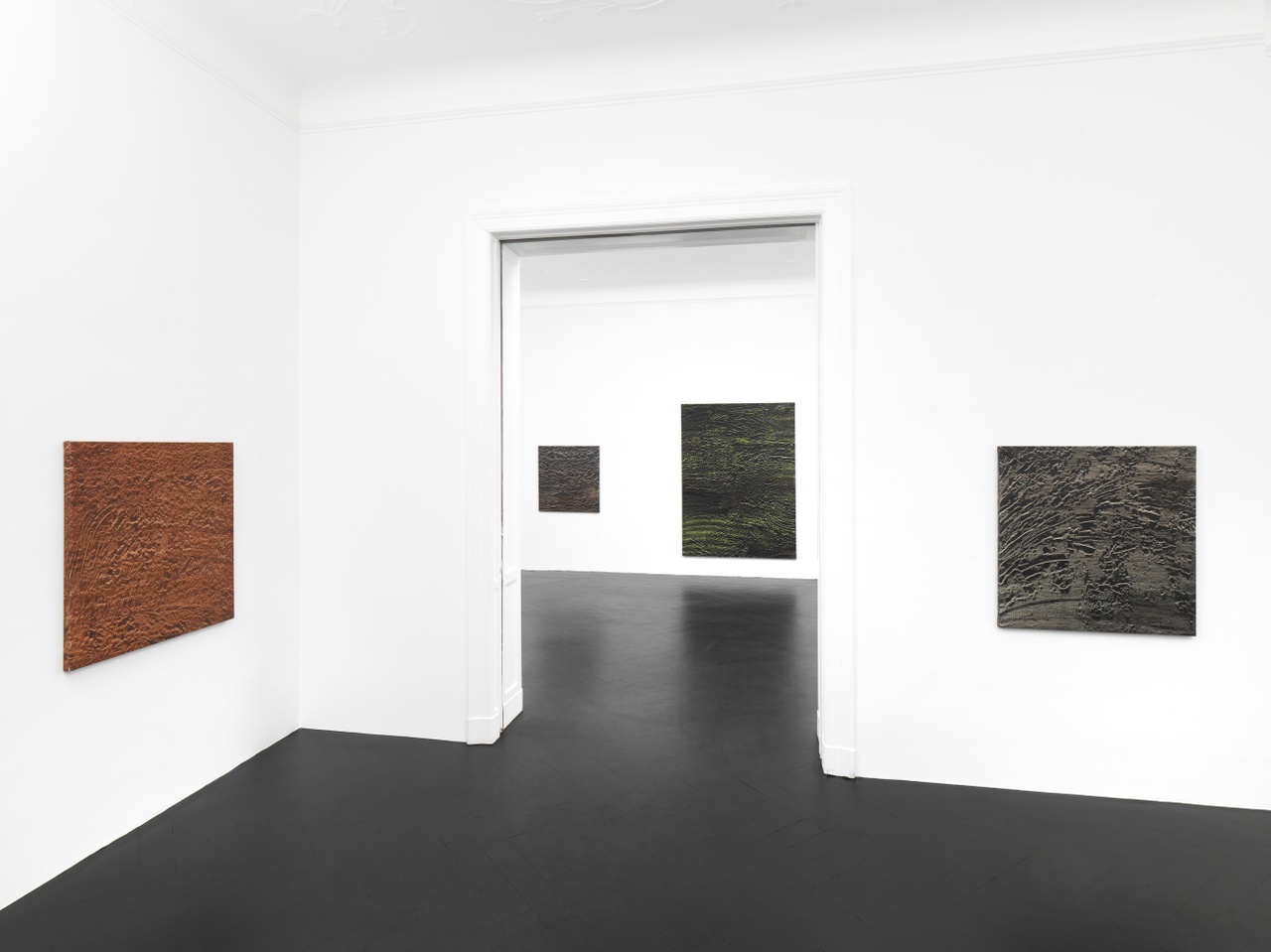SEEN & READ – BY ISABELLE GRAW Auguste Rodin, Heike Geissler, Isa Genzken

“Auguste Rodin: Corps In•visibles”

“Corps In•visibles,” Musée Rodin, Paris, 2024–25
The “dressing gown” (robe de chambre) has long interested me as a subject. Not only do I myself often sit at my desk in my robe in the morning, so that I can immediately begin to work after leaving bed, but some of my favorite authors (such as Simone de Beauvoir) also wrote their books while wearing a dressing gown – a garment that plays the central role in this fantastic exhibition on Auguste Rodin’s Monument à Balzac (1891–97). From the informative catalogue, we learn that robes de chambres served as a sort of loungewear (primarily for men) from the 18th century onward, and that they were associated with artistic creativity. For de Beauvoir to be photographed in her dressing gown was thus tantamount to an act of feminist appropriation. But back to Rodin: After he had been commissioned to produce a statue of Balzac by the Société des Gens de Lettres, he traveled (like an artistic researcher avant la lettre) to Touraine, where Honoré de Balzac had often stayed, on the search for similar physiognomies. He also visited Balzac’s tailor, who gave him a voluminous jacket that was once owned by the writer and now appears in this exhibition. In attempting to get to the essence of Balzac’s physique, then, Rodin chose the path of its cover or clothing. The writer’s ample stomach still protrudes clearly in the first version of Rodin’s sculpture. The exhibition’s curator, Marine Kisiel, explains that grossophobie (fatphobia) was common in the late 19th century, whereas Balzac’s corpulent stature was still seen as a sign of wealth during his lifetime. Rodin’s Balzac was correspondingly too fat for his clients, and in 1898 they rejected the sculpture. Rodin then had the idea of approaching Balzac’s body via his robes de chambre. Balzac owned many such garments, with receipts showing he purchased 23 gowns between 1830 and 1840. It was from one of these that Rodin produced the cast Étude de robe de chambre de Balzac (1897), which forms the centerpiece of this exhibition. The mantle appears like a white specter here, seemingly making both Balzac’s absent body and the terrycloth-like texture of his robe tangible. According to the curator, the fact that Rodin never destroyed this cast is evidence of the significance he ascribed to it within his body of work; it provided the template for his subsequent Monument à Balzac, which skillfully conceals the writer’s stomach inside his morning gown. At the same time, Balzac appears to be pleasuring himself under his robe, with Rodin sculpting a bulge at hand height between the dangling empty sleeves. Exactly what these hands are doing – whether they are holding the robe or masturbating – is ultimately inscrutable. In any case, Rodin’s sculpture suggests an animated inner space in which – as with the writer’s inner life – there’s potentially a lot going on. The symbolic visual language Rodin chose for Balzac’s body is countered with an expressionistic face, testifying to the modernity of this work. Rodin also had his Balzac adopt a curious pose: The body recoils and bends backward, as if Balzac were permanently trying to evade Rodin’s attempts to capture him in sculpture.
Musée Rodin, Paris, October 15, 2024–March 2, 2025.
Heike Geißler, “Verzweiflungen”

Heike Geißler
It is tempting tojoin in with this heart-wrenching lament. For as Heike Gießler rightly notes, some “former dystopias” really have now “become reality,” with current world events presenting us with “massive obstacles in every respect.” Trust in the world and its institutions disappears under such conditions. Barely anyone still believes things might somehow end up turning out well. What these evil tidings do to us mentally – that’s what this book is about. Rather than examining the anatomy of the feeling evoked by the title [roughly, “despairs” or “desperations”], it ”], it explores how this despair manifests itself: as a constant feeling of being overburdened and unable to continue, for example, with our ongoing stresses and fears leaving us unable to do anything but wail and howl in lament. Geißler’s lamentations remain “mainly internal,” however, without any screaming involved. At one point, she writes of her understandable desire to shield her children from this new reality by covering them with a “huge blanket” and protecting them from the world. At the same time, she feels she has no choice than to try and appear confident in front of her children, since “there’s no alternative.” That parents feel compelled to optimism when talking to their own children, despite there actually being more grounds for pessimism, is a good observation. Time and again, the author wishes for a pause – for a break in the permacrises that get in the way of her everyday life. But her book can also be read as a powerful plea to carry on against all odds, “because carrying on is the only option.” These notes are written in a powerful style that switches between essay, confession, free association, and dry commentary. Their strength seems to me to lie in the fact that they do not merely revolve around the individual misery of the author but also describe the situations of those around her, who equally find themselves forced to live through one crisis after another. The things she experiences are actually experienced by many. Her observation that living under the present circumstances makes us feel as if we are not allowed to wish for anything more also seems apposite to me. Because to wish for something better would be a distraction from the current crisis, which is, according to Geißler, a luxury we can no longer afford. Finally, I have just two small objections to this otherwise thoroughly convincing lament. I’m not sure it helps to describe followers of the AfD as “counter-people” [Gegenmenschen]; doesn’t this just deepen existing divisions, and wouldn’t it be more helpful to try and understand where their hate and resentment come from? I also find her use of quotes by theorists like David Graeber, Mark Fisher, etc. slightly pretentious, with their words placed like jewels throughout the text as if they represented the truth. Wouldn’t it be better to critically discuss such sources – that is, to work with them instead? Nonetheless, Geißler does succeed in building a bridge between the current permacrises and what they do to us mentally. Verzweiflungen resembles a psychogram of all those who react with nothing but horror to current political events, the rise of the right, and the increasing fascistization of society, but who have no choice but to continue.
Suhrkamp, 2025, 221 pages. In German.
“Isa Genzken: Basic Research”

“Isa Genzken: Basic Research,” Galerie Buchholz, Berlin, 2025
This exhibition at Galerie Buchholz in Berlin offers visitors an opportunity to view Isa Genzken’s rarely exhibited Basic Research series in detail. The paintings in question appear to be both painterly and photographic and were produced in various formats by Genzken in the late 1980s and early 1990s. Their motifs are faintly reminiscent of lunar crater landscapes that glow from within. They were produced using two techniques that have rarely been combined in the history of art: squeegeeing and frottage. With Basic Research, Genzken actually fused the aesthetic vocabulary of squeegee painters like Karl Otto Götz and Gerhard Richter with the frottage of a Max Ernst. While the squeegee establishes an indexical relation to the person using it – to their weight, body movements, and so on – frottage creates an indexical imprint of real materials. Basic Research fuses both processes together. Genzken began by laying each canvas on the floor before applying paint in deliberately “nasty” colors – yellowish brown and gray tones dominate, along with a toxic-looking shade of green. She then dragged a squeegee across the paint, thereby transferring the texture of the studio floor to the paintings’ surfaces. The marks left on the paintings’ surfaces by the squeegee can be read as traces of the artists’ labor, while their texture refers to the spatial conditions of her studio. It might be argued that, by creating an imprint of the studio floor, Genzken inscribed the work with an element of site-specificity – a much-discussed concept in the early 1990s. At the same time, lines of pastose paint protrude from the paintings’ surfaces where the squeegee was scraped across them, pointing to the process of production in the same way seams do. On the one hand, the title Basic Research was a play on the newfound significance of research for the then-emerging second generation of institutional critique artists. On the other, it marked an assertion by Genzken that she was conducting research of her own. These paintings are actually the result of an experimental approach similar to that described by Marcel Duchamp in “The Creative Act” (1957), in which he argues that an artist’s intentions are not expressed one-to-one in the results of their production. In Basic Research, Genzken also opted for an experimental set up whose outcome could not be predicted or controlled. In part, this was due to the artist’s use of the squeegee, which restricted her subjectivity in favor of the unpredictable. Genzken’s use of frottage also subjected her works to external parameters, however, by surrendering the result to the qualities of her studio floor. One might say she restricted the potential of subjective expression with the help of aleatory processes. In keeping with the horizontal production method used to create these paintings, which incidentally also communicate with the aesthetic of Jackson Pollock’s all-over paintings, the gallery opted for a strikingly low hanging. This emphasizes their experimental character; the works seem to invite the viewer to approach them, instead of confronting the viewer with an authoritarian setting. It’s also interesting to note that the their visible proximity to the indexicality of photography promotes an intermedial understanding of painting. The fact that each image depicts a section of studio floor also underlines its significance as a site, a notion that came under heavy fire in the late 1980s in discussions around “post-studio practices.” By contrast, Genzken seems even then to have insisted on the importance of the studio, also as a place of relative protection. For in Basic Research, it proves to be a site that not only makes open-ended experimentation possible but also stands metaphorically for the outside world that extends into these paintings.
Galerie Buchholz, Berlin, February 14–April 12, 2025.
Isabelle Graw is the cofounder and publisher of TEXTE ZUR KUNST and teaches art history and theory at the Hochschule für Bildende Künste – Städelschule in Frankfurt am Main. Her most recent publications include In Another World: Notes, 2014–2017 (Sternberg Press, 2020), Three Cases of Value Reflection: Ponge, Whitten, Banksy (Sternberg Press, 2021), and On the Benefits of Friendship (Sternberg Press, 2023); and the forthcoming Fear and Money: A Novel (Sternberg/MIT Press, 2025).
Image credits: 1. Rob Kulisek; 2. © Agence Photographique du Musée Rodin, Jérome Manoukian; 3. © Adrian Sauer, courtesy of Heike Geißler; 4. Courtesy Galerie Buchholz
